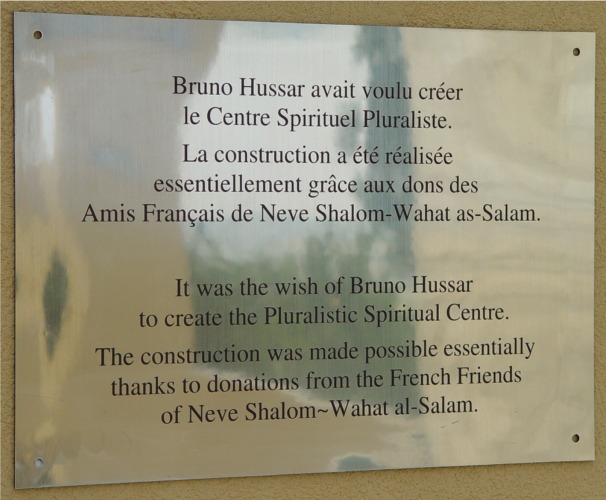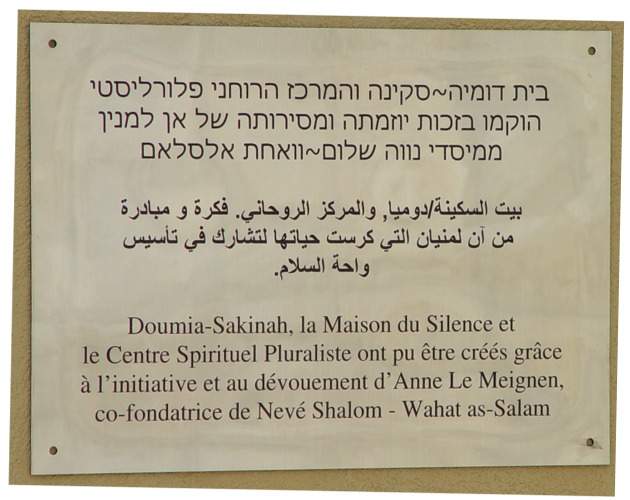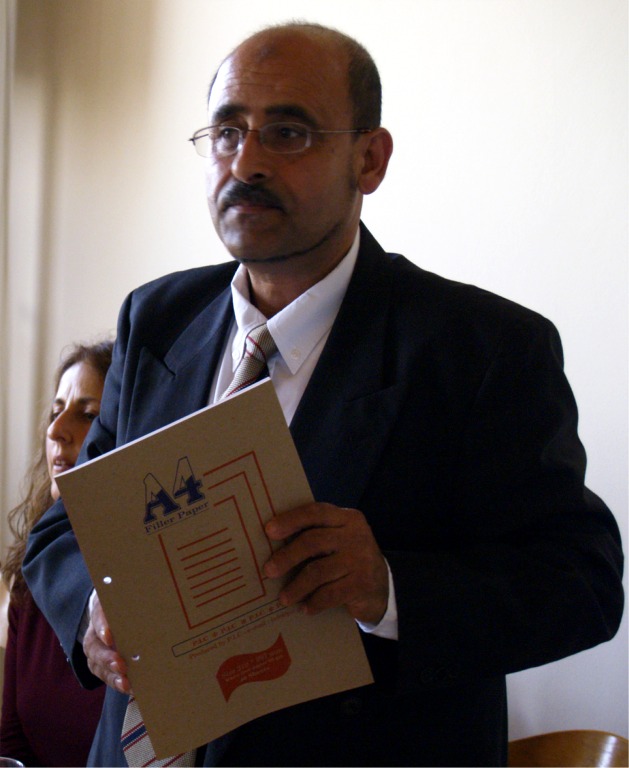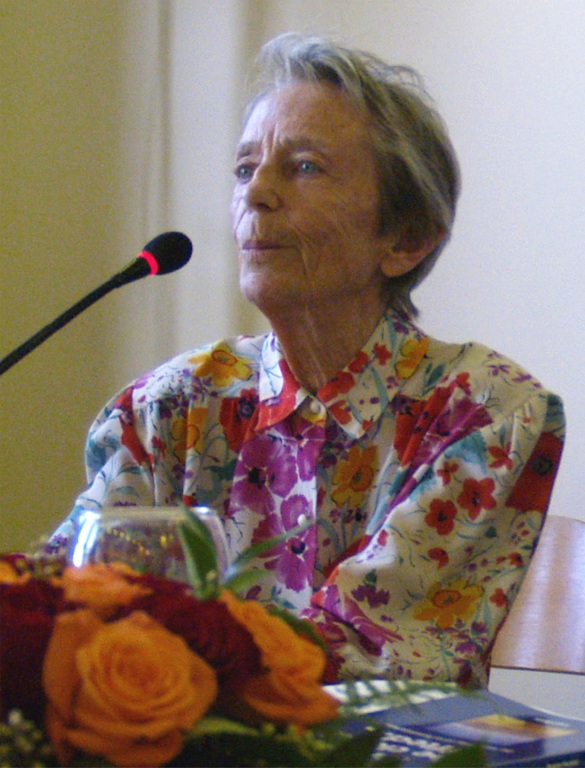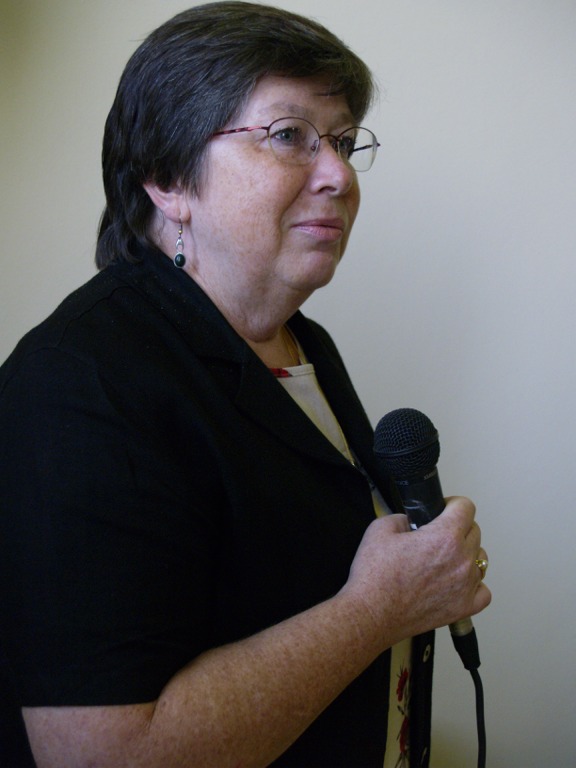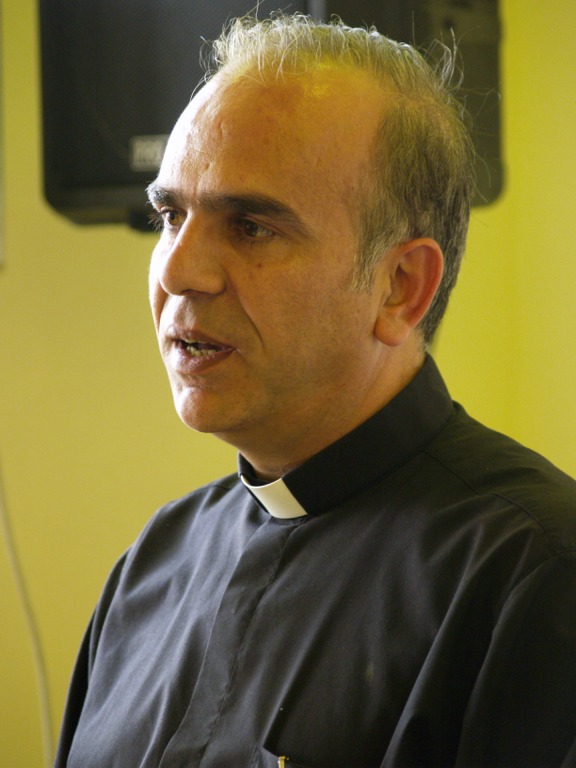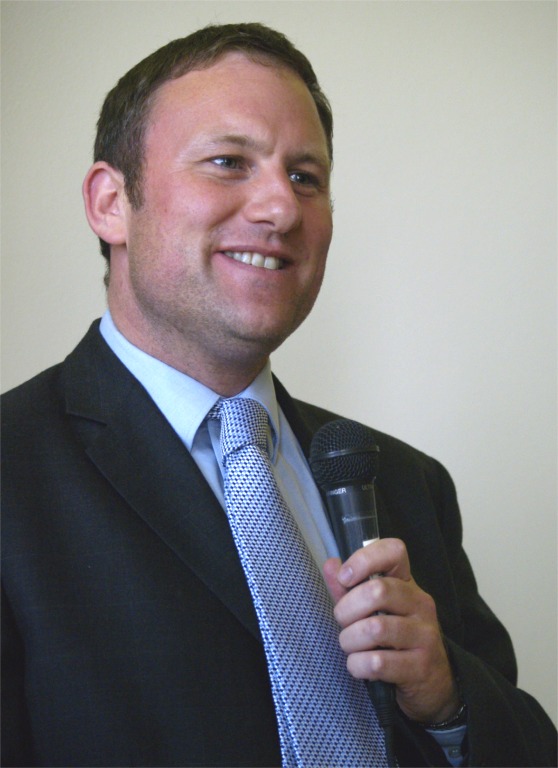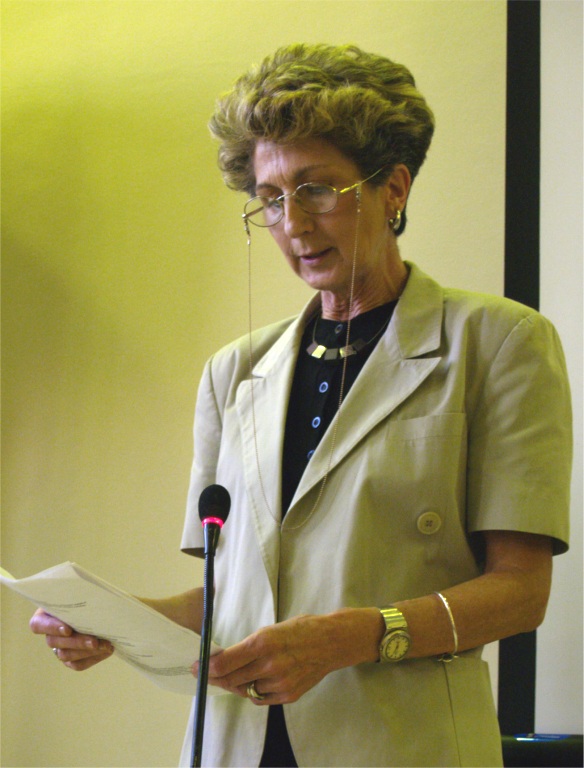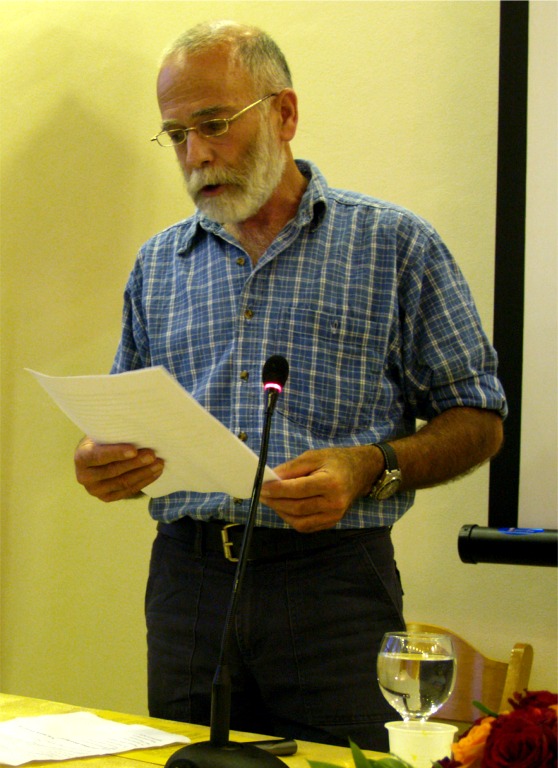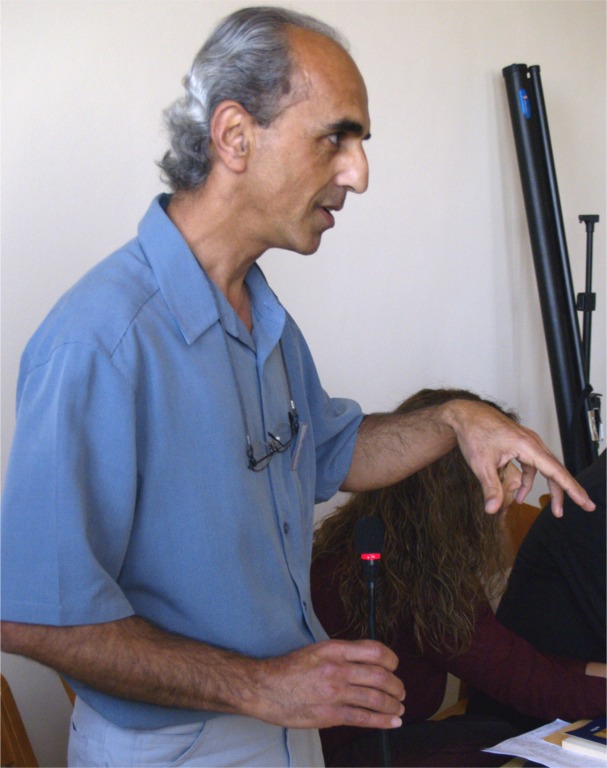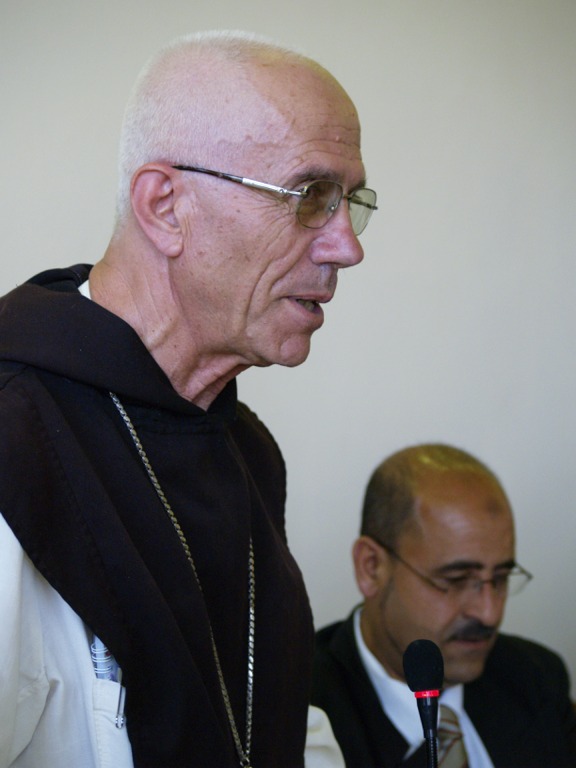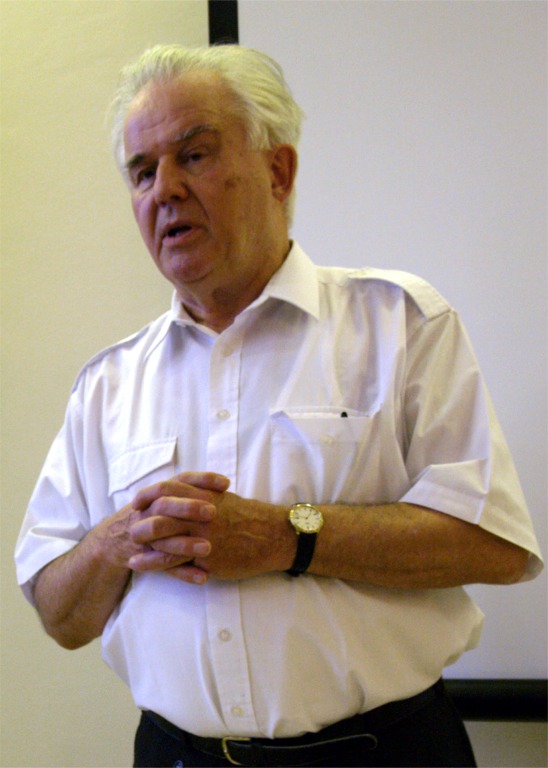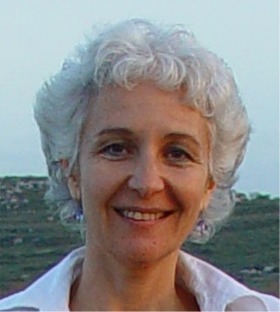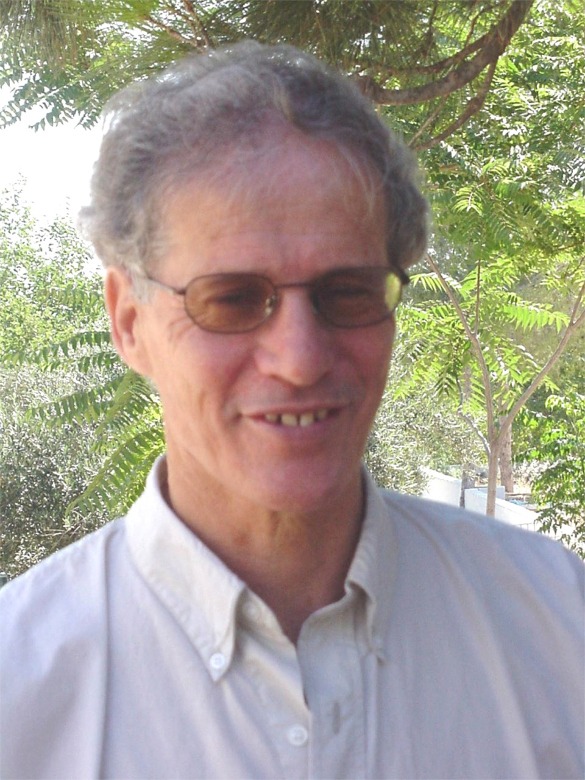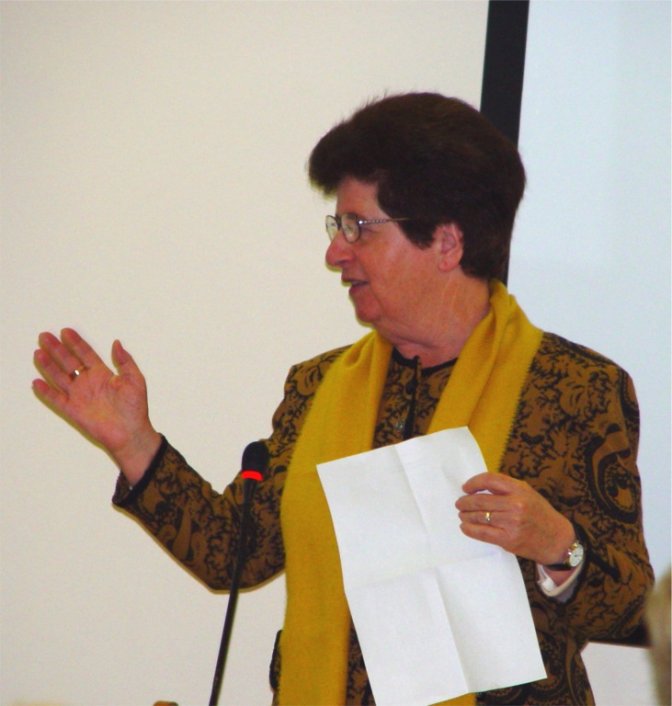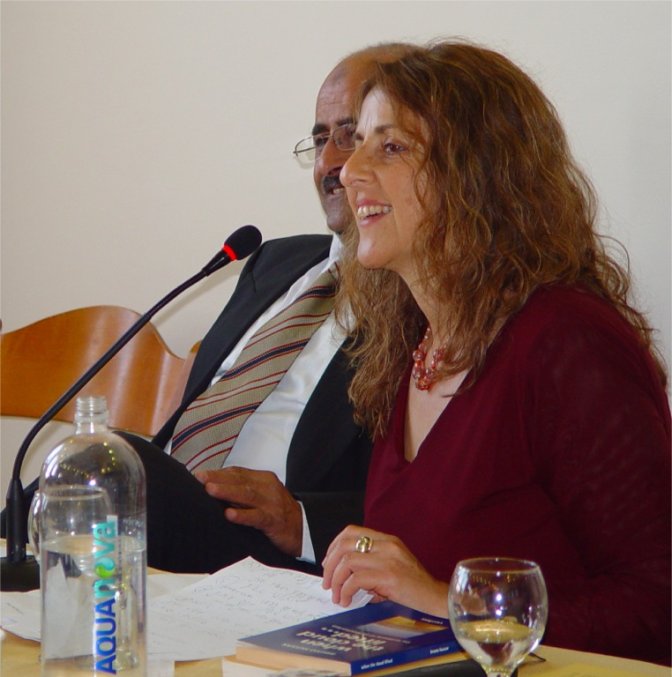Home > Oasis of Peace > Projects & Outreach > Doumia-Sakinah: The Pluralistic Spiritual Centre > The opening of the Pluralistic Spiritual Centre Building
The opening of the Pluralistic Spiritual Centre Building
Tuesday 23 May 2006

After years of fund raising, architectural planning and construction, the building was finally ready. Last minute efforts involved the purchase of furniture, carpets for the prayer room, and landscaping, including the planting of two enormous date palms (each weighing one and a half metric tonnes).
It is hard to express the excitement when on April 30, the day of the opening event arrived. Here stood the beautiful new building with its graceful façades, airy central courtyard, domed roofs, and simple, aesthetic interiors. It is surely one of the finest examples of modern sacred architecture in our region, and undoubtedly the first on this hilltop since the Byzantines built a church here fifteen hundred years ago.
| Special thanks are due to Les Amis de NS/WS en France, without whom the new Pluralistic Spiritual Centre building could not have been constructed. |
To the opening event were invited representatives of Neve Shalom Wahat al-Salam’s friends’ associations, local people involved in interfaith and dialogue work and all those who had contributed in some way to realizing the new building. In addition, the day marked the decennium of the death of NSWAS founder Bruno Hussar.
The new building proved too small to contain the many guests, and although not everyone found a seat, good humour prevailed throughout the ceremony. The first part of the afternoon was devoted to blessings for the new building and expression of thanks. Long term NSWAS resident and co-worker in the Pluralistic Spiritual Centre Abdessalam Najjar served as master of ceremonies.
NSWAS Secretary Rayek Rizek was the first to speak. “I am thrilled to be present at the opening of the third of the major institutions of NSWAS, following the School for Peace in 1979 and the Primary School in 1984.” Besides expressing thanks to everyone involved, he said “the opening of the building fulfils another dream of Bruno Hussar, who is surely present with us today.”
Rayek was followed by co-founder of NSWAS, Anne Le Meignen. “Bruno and I worked together for 26 years. He was not a myth but a sincere man with a vision. He wanted that there would be a village of peace one day..." Anne talked about the name of the Pluralistic Spiritual Centre. She said that the name of the Centre denotes being open to all peoples, whether believers or non-believers, religious or secular. “There is a spiritual dimension in each and every person” Doumia, she said is made up of two words, “’Dom’ - or silence, and ‘Ya’, signifying God. So Doumia means the silence of God.”
The next speaker was Nicholas Brecher, representing Les Amis de NS/WS en France, which were the principal supporters of the building’s construction. M. Brecher said that Bruno’s idea to bring together Jews, Christians and Muslims had been very attractive to the French. They understood Bruno and Anne’s message that though village had developed as a non-religious project, reconciliation itself had a spiritual dimension. Initially, the French had supported the building of the House of Silence. Les Amis de NS/WS believe that NSWAS cannot advance without a spiritual dimension and that in time the Pluralistic Spiritual Centre will grow to be as important as the other projects of the village. In conclusion, M. Brecher thanked Daniel Sée, director of Les Amis de NS/WS for his dedicated work and promised that the Association would continue to support the operation of the Centre now the building was completed and expressed his hope that the other friends’ associations would join in to help too. He ended with a personal wish that the Centre would apply itself to the study of the three monotheistic faiths.
Abbot Paul Sauoma of the Trappist Abbey of Latroun spoke briefly. He expressed the Abbey’s great interest in the village. In the name of the Abbey he said “We believe and support the purpose of NSWAS.”
Ms. Agneta Ucko, director of the Arigatou Foundation in Geneva brought a greeting and expressed hopes that the new building would serve as a centre for interfaith learning also for children and young people. Her report can be found here.
Gideon Sylvester, an orthodox rabbi as well as Assistant to the Ministry for Israeli Society & the World Jewish Community, spoke about the importance of the concept of silence, in a presentation illustrated with personal anecdotes and biblical references. He said that when he he raised the question of the suitability of the model represented by NSWAS, he had been reminded that in the UK he had also lived in a mixed community of Jews, Muslims and Christians and seen this as perfectly natural. He realized that it should be just as natural here. Rabbi Sylvester quoted from the Book of Micah, where it is said that each person should worship in his own way. Speaking of silence, he brought a quotation from the Book of Kings, which explains how God is to be found, not in tumult of wind, earthquake and fire, but afterwards, in the ‘still small voice’. He said that this was the power of silence.
Rabbi, Dr. Ron Kronish, who chairs the Interreligious Coordinating Council in Israel (ICCI), said that when invited, he had immediately agreed to come to the event, because of what NSWAS represents. He said that in Judaism, every prayer service includes a prayer for peace, but that prayer, in itself is not enough, for we need action. NSWAS has been for many years a place of both words and deeds. He explained how the ICCI serves as a roof organization for more than 60 groups, where the purpose is to build peace between people and to change hearts and minds in favour of peace. “We are here to keep hope alive and will do this in cooperation with the Pluralistic Spiritual Centre.”
Next to speak was Father Dr. Jamal Khader, Chairman of the Department of Religious Studies of the University of Bethlehem. He spoke about silence as a force that can unite people. “When we talk about God, we fight, and when we pray we are separate, yet our duty is to see each other as brother and sister, rather than as enemy.” He said that this is something he sees fulfilled in NSWAS, and compared this to his experience in Bethlehem, where "an ugly wall is being built between our two peoples". However, he qualified that he had not come in order to make a political statement and did not wish to sound harsh.
The last in the session to speak was Dorit Shippin, coordinator of the Pluralistic Spiritual Centre. She spoke of the relation between the words “Doumia” and “Sakinah”. She emphasized the linguistic relationship between the Hebrew word “Shekhina” and the Arabic Sakinah”, both of which come from the root meaning ”to dwell”. She suggested that the presence of peace and the presence of God are linked. “God dwells where there is peace”. "The purposes of the Pluralistic Spiritual Centre are education for peace, the study of peace and the preparation of the ground for peace. I see the existence of Neve Shalom Wahat al-Salam as a political statement. " She quoted from Bruno’s autobiography a passage that indicated that the desire for peace must be accompanied by activity for peace. Finally, she read the poem of Thich Nhat Hanh “Call me by my true names”, dedicating it to all the people in our region, on the two sides of the conflict.
The second part of the afternoon was dedicated to the memory of Bruno Hussar, who died in February 1996.
The activity began with a 20-minute PowerPoint presentation on Bruno Hussar and the early history of the village. It was produced at the initiative of Doumia - Sakinah in honour of the 10th anniversary of Bruno’s passing and shown for the first time now, at the inauguration of the new building. The powerpoint presentation was the work of NSWAS member Smadar Kremer, who gathered together old photos, quotations and film material and organized them all in a way that was both informative and inspiring. (The presentation is obtainable from the village).
Following the presentation, village resident Dafna Karta-Schwartz spoke. She read from Bruno’s spiritual “will” and followed with some personal words. She said she would like to share with him all that has happened over the last ten years and describe how the seeds planted then had grown up today. “Sometimes these had proved to be seeds of hope and sometimes they gave birth to thorns”. She recalled how, while he was still alive she had often shared with him her worry or sorrow, and that he had always said not to worry, but that a moment would come where patience would be rewarded. “Now I feel that, with the completion of this building, this moment has come. We will do our best to activate the Centre. And if we don’t find peace in these days, it will surely come in the next generation ”.
Franca Fabris spoke on behalf of the l’Associazione italiana degli Amici di Nevé Shalom/Wahat al-Salam. She told how she had first met Bruno in 1970. She had accompanied her first husband, who knew Bruno, on a trip to Jerusalem. She mentioned her first impressions of the man, and observed that he had listened to her with attention and without judgement. The occasion of this first meeting was special, since he had announced that he had just received permission to receive the lease of land from the Abbey at Latroun, for the building of the peace village of NSWAS.
The next speaker was Hermann Sieben, chair of the Verein "Freunde von Neve Shalom/Wahat al Salam e.V.". He said that Bruno Hussar was one of the most impressive persons he had met in his life. He first met Bruno in 1978, when he came over to Germany for a conference entitled “Two people living in one land”. Two years later, in 1980, Hermann Sieben had met Bruno again when he came for the first time to NSWAS to write an article. “I was always impressed by his humility, wisdom, kindness and friendship.” Herr Sieben said that the two most important things in Bruno’s life were NSWAS and the work he did in the 1960s at the Vatican II Council, where, together with Cardinal Bia, he helped to shape the document that changed the attitude of the Roman Catholic Chruch towards Jews and other religions.
Sr. Karmela Farrugia, a sister of Our Lady of Zion, followed. She explained how she met Bruno and heard from him about NSWAS when it was still a dream. This was at Ecce Homo Convent in Jerusalem, in 1967, just after the war. “Already at that time, Bruno was saying that he wanted to work for reconciliation between Jews and Arabs.” Today, forty years, she said, she finds herself speaking here in NSWAS, and she too continues to work for the same purpose.
The last two speakers were from NSWAS itself. Ilan Frish who, after Anne Le Meignen, has been longest in NSWAS. As building manager, he has been involved in the construction of most of the public buildings of the community, including that of the Pluralistic Spiritual Centre. He pointed out that in starting NSWAS, Bruno had not been endowed with any special knowledge of the conflict. He worked from a basis of universal and cosmopolitan values. His advantage was his ready willingness to listen with an open heart. He considered that that all people who believe in justice and in not harming others, are people of faith, regardless of their religious beliefs or lack of them. This was the attitude upon which the Pluralistic Spiritual Centre was based. From such a starting point, "it is clear that those who become active in the Centre will never agree to human injustice, but will aspire for justice, will strive always to listen to the other, and will maintain mutual respect for one another." He said that this attitude and principles would be manifested in the dialogue activities of the Centre.
"This building should be the abode and address of Bruno’s heritage. I also want to mention that in recent years, I feel that Bruno’s original spirit has returned to the community. “We have started to ask questions and are inspired by his character and his humility. We have started to discuss the dilemma of whether, in order to make peace between people, we need to make peace first with ourselves. We know that if we do not have interior peace it is hard to bring about peace externally, though on the other hand if a person is too busy with introspection, there is a danger that he will neglect to see reality and the evil that people do to one another.” Ilan’s conclusion is that we need to find a balance between seeking peace within and trying to make peace between people.
Boaz Kitain was the final speaker. Boaz is a long term resident of the community and today chairs the Parents’ Circle - Families Forum. He said he wanted to speak about the future of NSWAS. “Lately, when I read Bruno’s writings I find myself identifying more and more with what he was saying. I see the Pluralistic Spiritual Centre as a place that will enable members of NSWAS and others from outside to express their spirituality. For this, we need to be able live in freedom, enjoy basic rights and, more than anything, understand the sacred value of life. We should work against violence and act in a way that is not violent, because violence always brings more violence. You cannot disperse darkness with darkness, but only with light.” Boaz said he hoped that here, in the Pluralistic Spiritual Centre, we would maintain a constant dialogue, with an open and pluralistic attitude, and succeed in delivering this message to others living around us in the region.
The seminar was followed by a festive meal in the Neve Shalom Wahat al-Salam auditorium and a wonderful performance of the Arab-Jewish Youth Orchestra, conducted by conductor and composer Wissam Jubran.
A separate report describes the Opening Conference of May 1 2006.
(thanks to Y. Shippin
for most of the photos)
